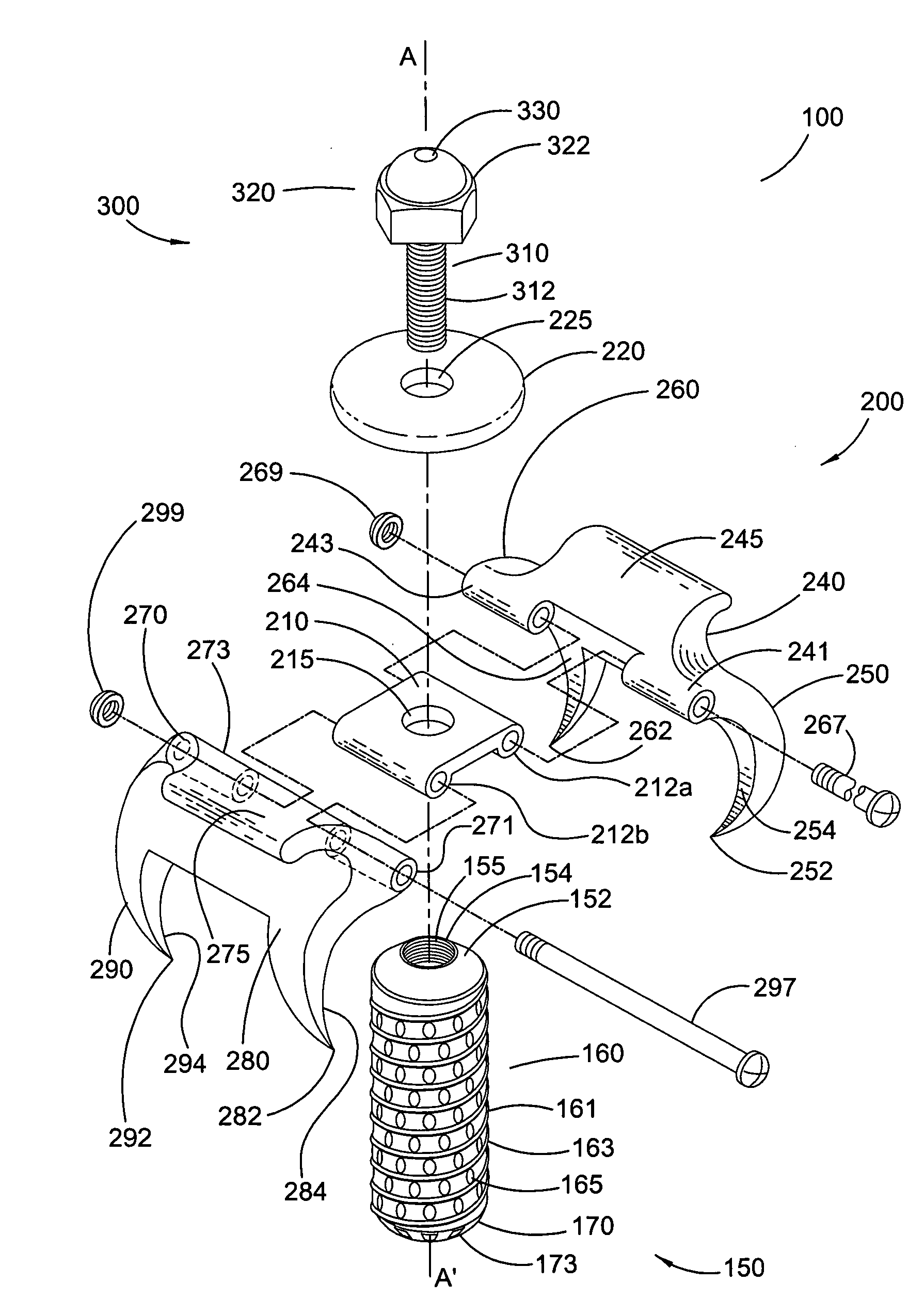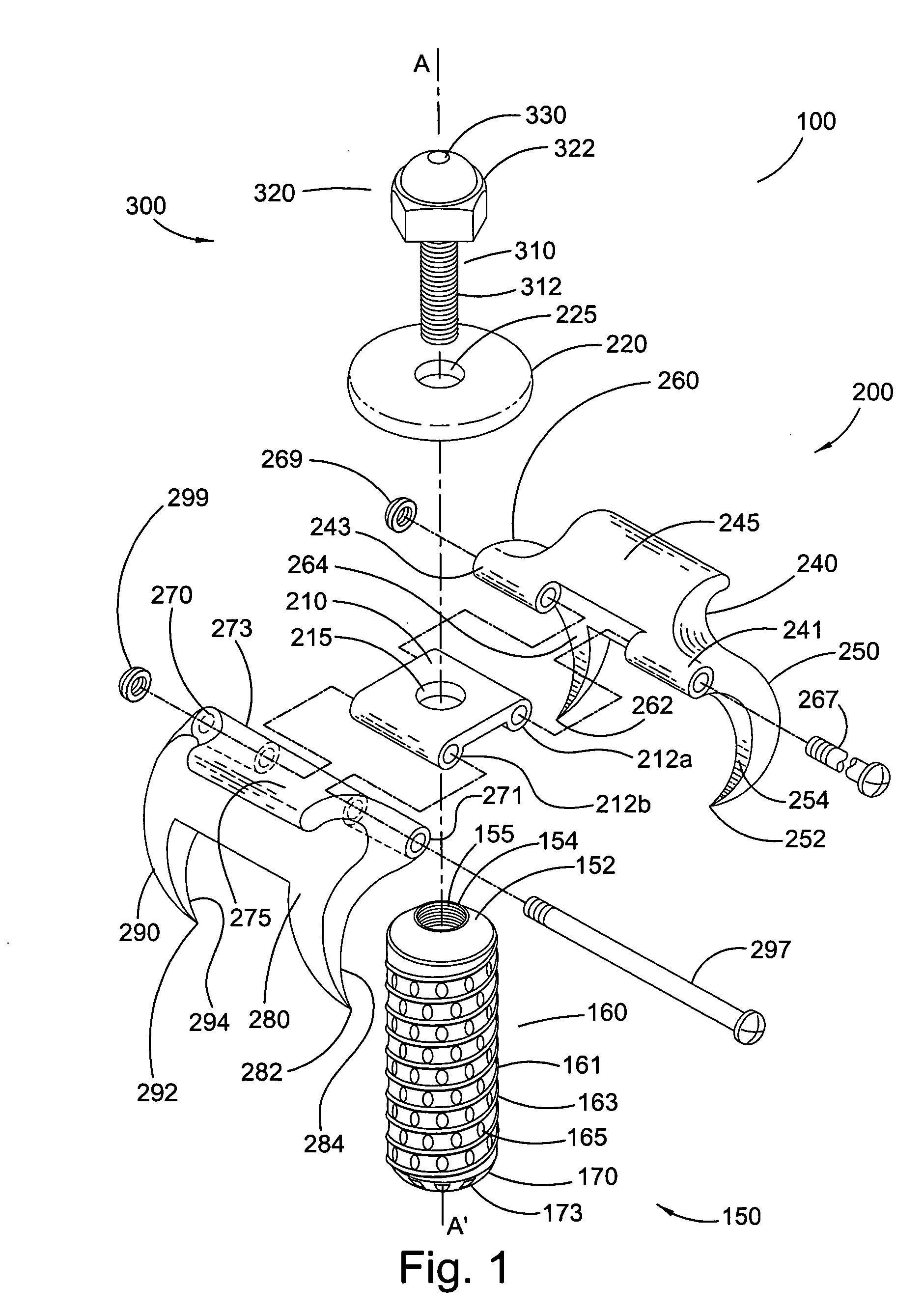Facet joint fixation device
a fixation device and facet technology, applied in the field of orthopedic surgery, can solve the problems of herniation or protrusion of disc pieces, intervertebral discs located in highly mobile regions of the spine, and human spine intervertebral discs are disproportionately prone to degeneration
- Summary
- Abstract
- Description
- Claims
- Application Information
AI Technical Summary
Benefits of technology
Problems solved by technology
Method used
Image
Examples
first embodiment
[0048]The first embodiment facet fixation device 100 is best understood in view of FIGS. 1-9g. FIG. 1 is a perspective view of facet fixation device 100 broadly comprising inter-bone implant 150, screw 300, and bone fixation apparatus 200, hereinafter referred to as clamp 200.
[0049]Screw 300, which may be any suitable screw, broadly includes head 320, shaft 310 having threads 312, and, preferably, through-bore 330. The screw drive of screw 300 may be of any type, but is preferably hex cap screw 322 when used in combination with clamp 200. Screw 300 may further include plate 220, the function of which is described in detail infra. Plate 220 may be a separate component, as shown in the figures, or integrally formed with head 320.
[0050]As shown in FIGS. 3-5, inter-bone implant 150 comprises body 160, which is preferably hollow and either cylindrical or frustoconical, first end 152, and second end 170. First end 152 includes aperture 154 having internal threads 155, which are operativel...
second embodiment
[0068]The second embodiment facet fixation device 100, is best understood in view of FIGS. 10-14h. FIG. 10 is a perspective view of device 100 broadly comprising inter-bone implant 150, screw 300, and bone fixation apparatus 400, hereinafter referred to as cap 400.
[0069]Screw 300, which may be any suitable screw, broadly includes head 320, shaft 310 having threads 312, and, preferably, through-bore 330, as shown in FIGS. 11 and 12. The screw drive of screw 300 may be of any type, but is preferably cruciform screw drive 324 when used in combination with cap 400.
[0070]As in the first embodiment, inter-bone implant 150 includes body 160, which is preferably hollow and either cylindrical or frustoconical, first end 152, and second end 170. First end 152 includes aperture 154 having internal threads 155, which are operatively arranged to threadingly engage threads 312 of screw 300. Second end 170 preferably includes one or more apertures 173, which are arranged to accept residual bone ma...
PUM
 Login to View More
Login to View More Abstract
Description
Claims
Application Information
 Login to View More
Login to View More - R&D
- Intellectual Property
- Life Sciences
- Materials
- Tech Scout
- Unparalleled Data Quality
- Higher Quality Content
- 60% Fewer Hallucinations
Browse by: Latest US Patents, China's latest patents, Technical Efficacy Thesaurus, Application Domain, Technology Topic, Popular Technical Reports.
© 2025 PatSnap. All rights reserved.Legal|Privacy policy|Modern Slavery Act Transparency Statement|Sitemap|About US| Contact US: help@patsnap.com



